How to play the djembe?
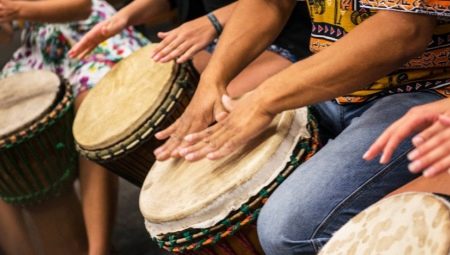
The traditional musical instrument of West Africa has a deep sound and interesting rhythmic pattern. The cube-shaped drum is made of solid wood. The wider upper is covered with zebra, cow or goat skin. The wooden surface is always decorated with patterns and sacred designs.
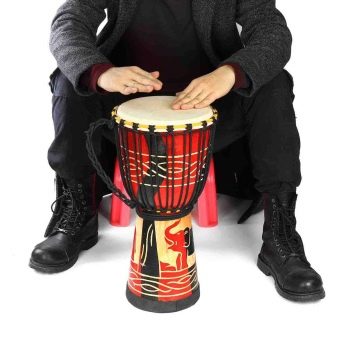
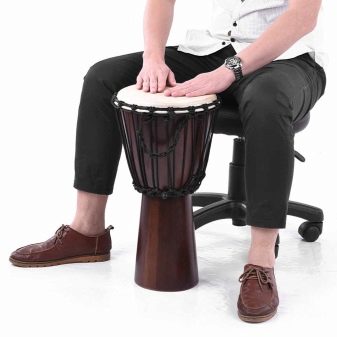
How to setup?
It is very interesting to play the djembe, because the drum has an unusual sound. Before starting, you need to set up the instrument. There is a rope on the drum, it should be tied correctly. A special system of nodes is used. The rope should be braided around the drum until the sound is correct and clear. When the whole circle is completed, it is necessary to make a transition. To do this, thread the rope correctly. Then you need to continue braiding in the other direction. The lace must be passed through the existing vertical ropes, tightening tightly. It is necessary to act slowly but clearly.
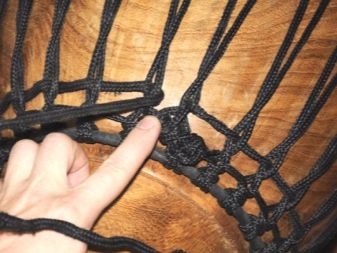
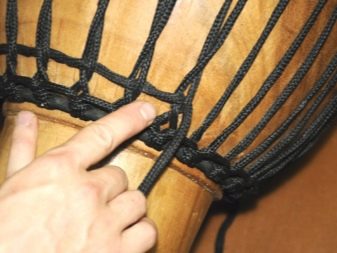
As a result, the vertical stripes will cross and lock in the desired position. If this does not happen, then the rope is too loose.
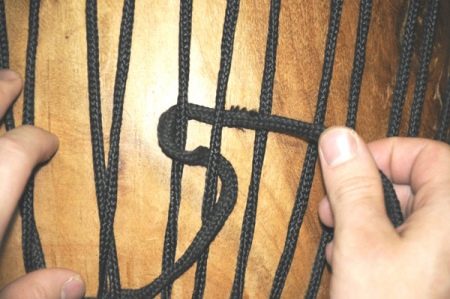
While tuning the djembe, you should sit on the floor, put the instrument next to it, resting your feet on it. Tighten down to keep the knots as close to the bottom as possible. The rope can be pre-wound on a stick to make it easy to pull. The result is a kind of macrame.
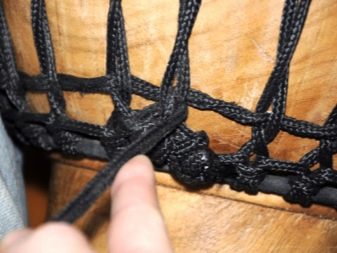
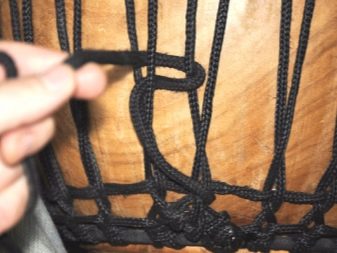
It is important not to overtighten the djembe. Otherwise, the skin on the top may burst. It is important to understand that there is no need at all to complete the circle. If the sound is already correct, then you can stop.
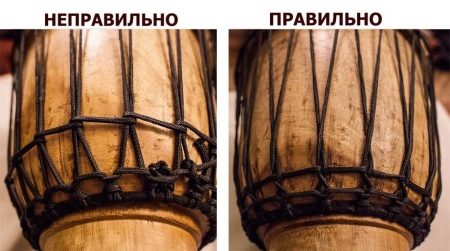
Here are some important tips for aspiring musicians.
-
You need to set up the djembe yourself. This is because this is not a one-time manipulation, but a regular one. At the very beginning of training, a new instrument will have to be tightened approximately every 5-7 days. It all depends on the intensity of use.
-
Self-configuration is not difficult. It is enough to do this once with the utmost care and attention. In this case, it will be extremely simple and quick to set up the djembe later.
-
There is no right way. When setting up, you need to be guided by your own preferences. Experiment with the tension on the cord and see the difference in sound. Only after that does it make sense to dwell on one option.
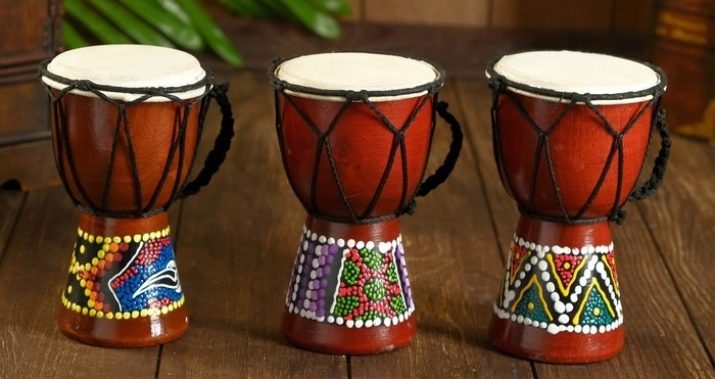
Basic strikes
Various rhythms can be played on the djembe. The game for beginners consists of the most simple strokes. First, you need to learn each fight separately, and then combine these elements.
Let's take a look at the main hits.
-
Bah. You should bring your fingers together and hit the center of the membrane. It is important that the arm bounces calmly, like on a trampoline. An open punch can be done with either hand.
-
Cle. Beat in the middle of your palm with fingers wide apart. The impact falls on the edge of the membrane. The fingers also hit the skin by inertia.
-
Co. An intermediate battle between the two previous ones. As a result, the hand is in the same position as in Ba. But you need to beat closer to the edge of the membrane.
-
Slap. The left hand is located in the center of the drum, it slows down the vibrations. The right one hits Cle. If you place the left one near the edge of the canvas, then the overtones will be high.
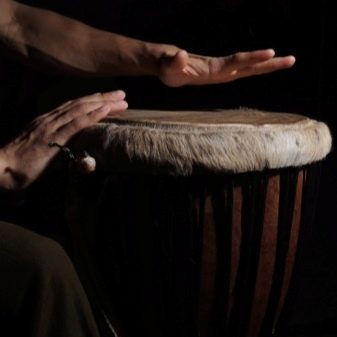
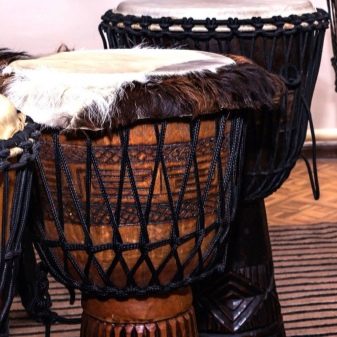
It is important to play rhythmically on the djembe. Strikes with the left and right hands must be alternated. Make sure the drum resonates. To do this, it is necessary to deliver open blows in which the palm bounces off. When closed, the hand strains and presses against the surface of the drum.
On the djembe, you can get 3 different tones: open, bass and slap. The first is achieved by hitting the joints near the edge of the membrane. The bass tone is produced by striking in the middle. The slap is the hardest one. The impact sound should be as high as possible.
Djembe should be hit with varying strength. This will affect the sound volume. Beats can be accentuated and slightly muted. Thanks to this, the rhythmic pattern will be as diverse as possible.
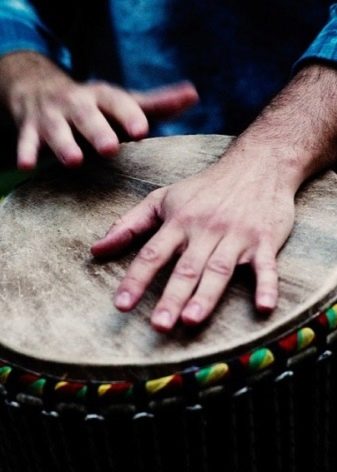
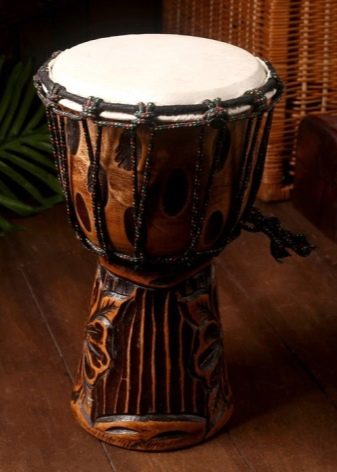
General recommendations
Setting up the instrument is just preparation for training. This way you can achieve the highest quality djembe sound. Then you can go directly to the lessons. The masters recommend that you warm up before starting the game and sit on the floor. Playing the African drum requires not only physical effort, but also spiritual.
The drum can be played while standing. In this case, the tool is kept close at hand. You can also play while sitting on the floor with the drum in front of you. It is better to learn to hold the instrument while standing.

There are some tips for drum placement.
- Djembe can be secured with a strap. In this case, it is hung around the neck, and the instrument is placed between the knees.
- The drum should be at right angles to the musician's hands. To do this, just adjust the straps.
- It should be comfortable to stand up and fix the djembe as tightly as possible.
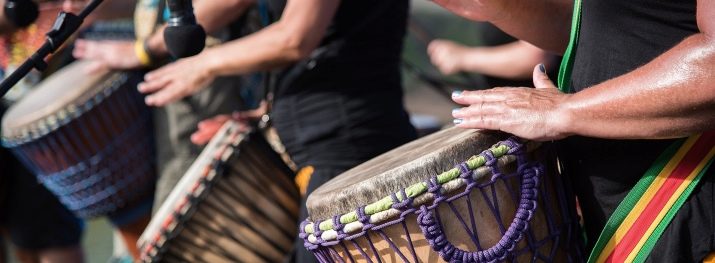
You can also play the African drum while sitting on a chair. In this case, the tool should be tilted slightly away from you. In any case, it is important to conduct lessons in different poses in order to choose the most comfortable one for yourself.
General rules and recommendations for playing the djembe:
-
it is useful to beat off the beat with your foot in the process;
-
when teaching, slow rhythms with a simple pattern should be used;
-
you need to study in a quiet place in order to hear all the overtones.

Lessons should be regular. From time to time you will have to re-tune the instrument, while you can change the characteristics of the sound. Over time, you can move to a faster rhythm, or just change it right while playing the melody. It is recommended that you involve someone else so that the musician does not beat the beat.
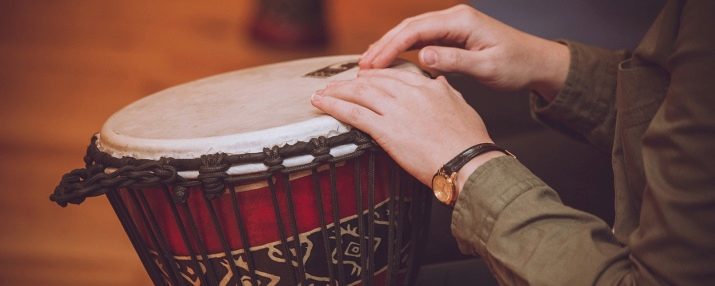
The following video presents the most popular djembe rhythms and their technique.








